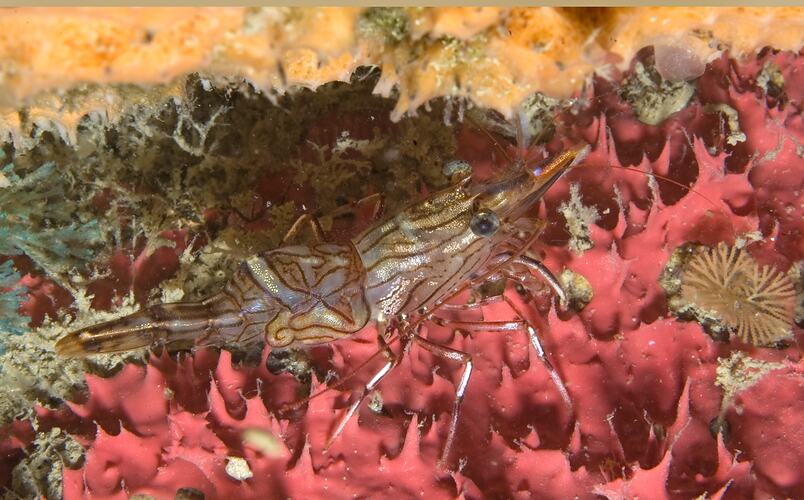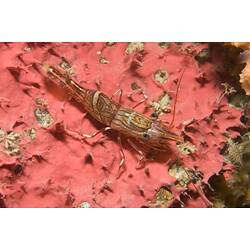General Description
Body transparent with thin red lines and spots. Up to 7 cm long (head to tail tip).
Biology
Hinge-beak Shrimps can move the triangular piece of carapace between their eyes (rostrum) up and down. It is thought to be a threat display. Only three species from this group of shrimps occur in Australia.
Distribution
South Australian, Tasmanian and Victorian waters.
Habitat
Rocky reefs, in crevices or among seaweed and seagrass, to depth of 25 m.
More Information
-
Animal Type
-
Animal SubType
-
Brief Id
Red lines and spots, rostrum can move up and down.
-
Colours
Red, Transparent
-
Habitats
-
Diet
Carnivore
-
Diet Categories
Animal matter
-
Endemicity
-
Commercial
No
-
Conservation Statuses
CITES: Not listed, FFG Threatened List: Not listed, EPBC Act 1999: Not listed, IUCN Red List: Not listed
-
Depths
Shore (0-1 m), Shallow (1-30 m)
-
Water Column Locations
On or near seafloor
-
Taxon Name
-
Scientific Author
Hale, 1941
-
Common Name
Hinge-beak Shrimp
-
Phylum
-
Subphylum
-
Superclass
-
Class
-
Subclass
-
Superorder
-
Order
-
Suborder
-
Infraorder
-
Family
-
Genus
-
Species Name
australis



